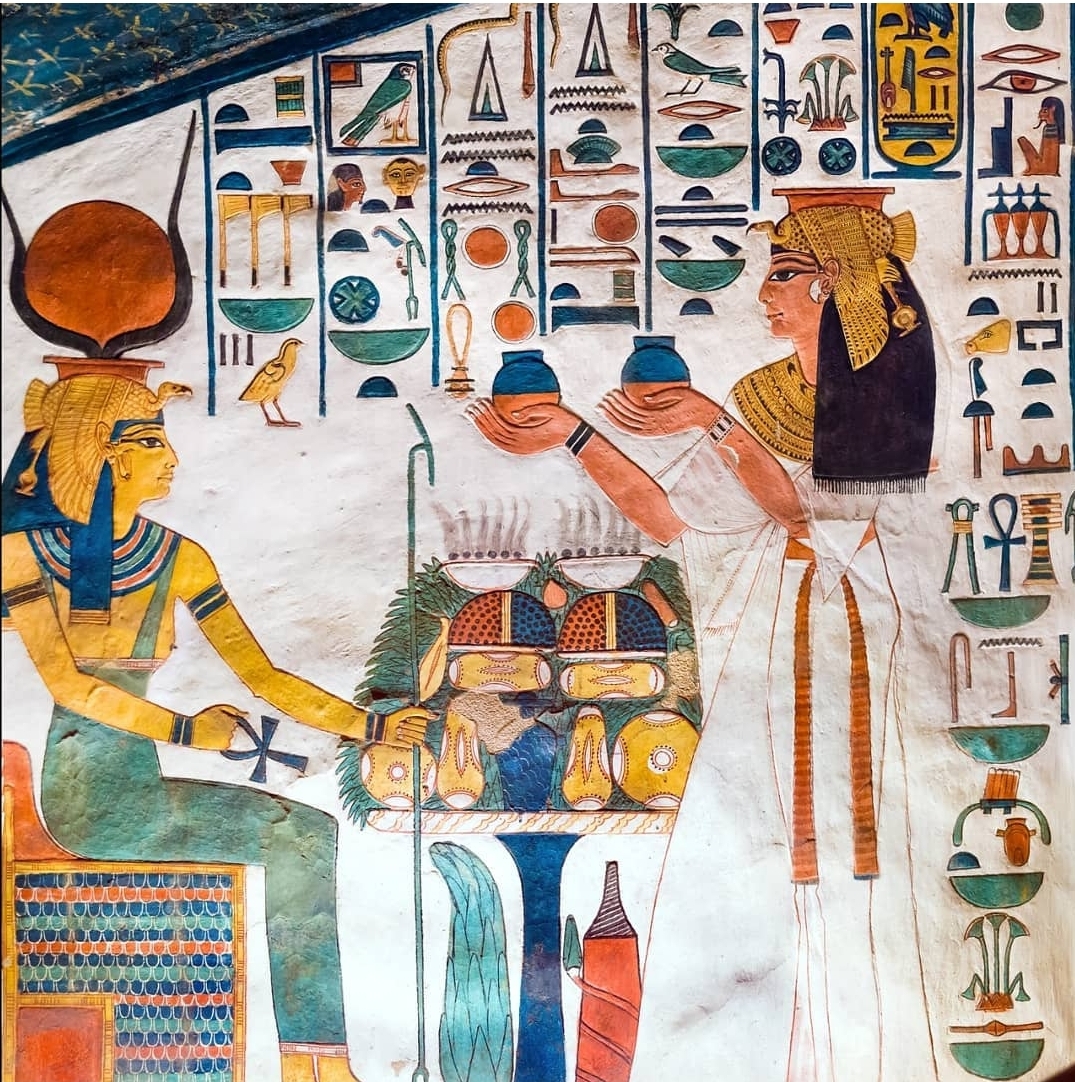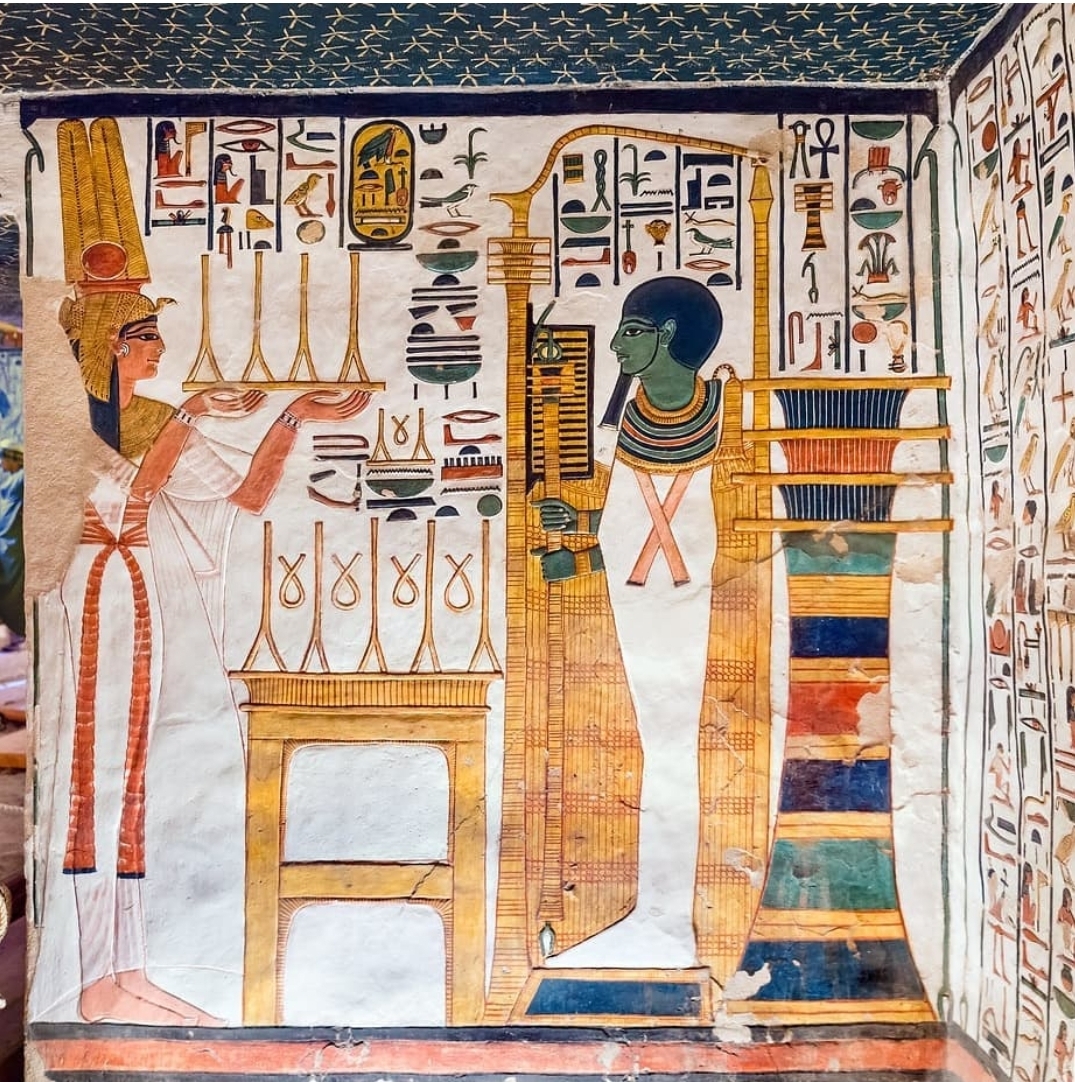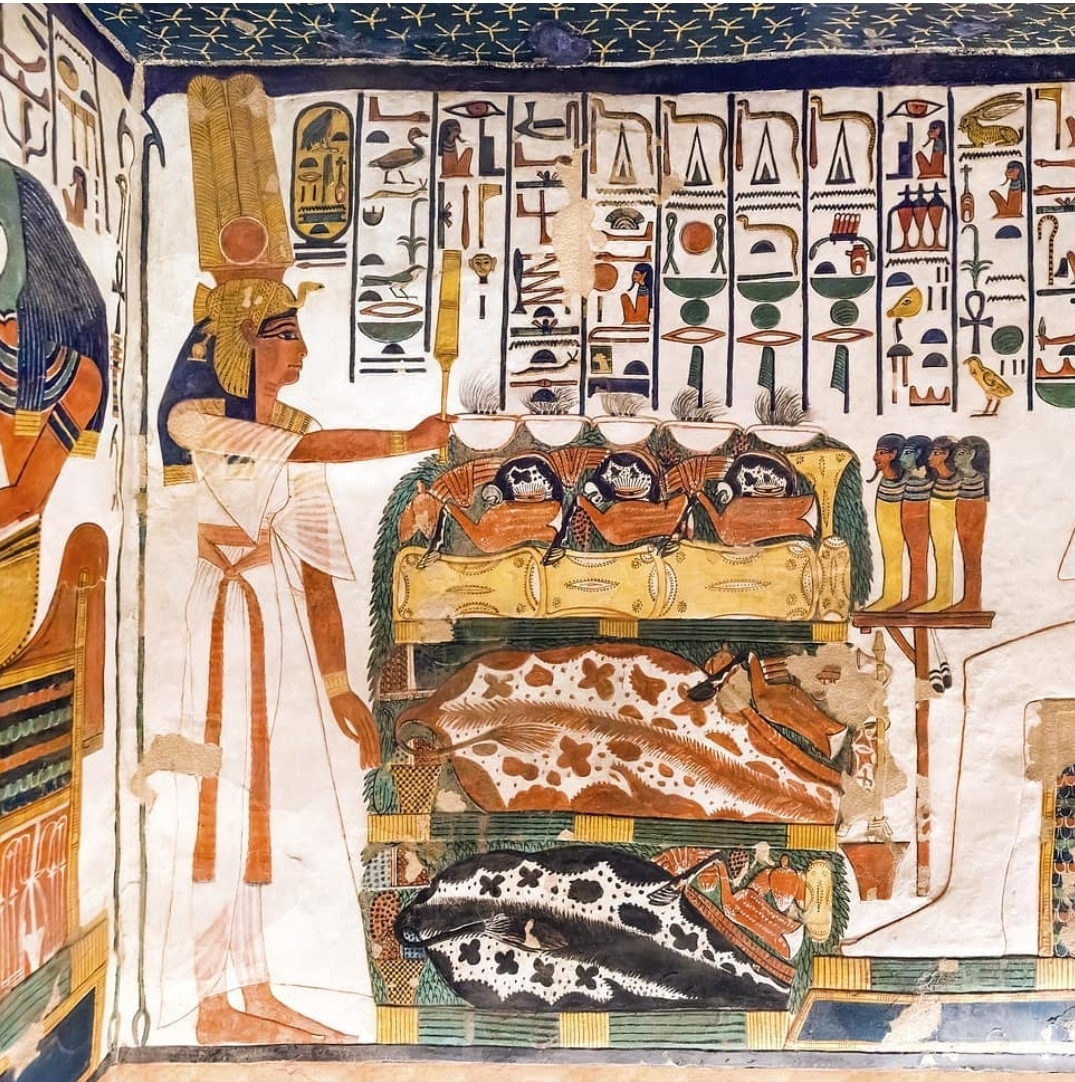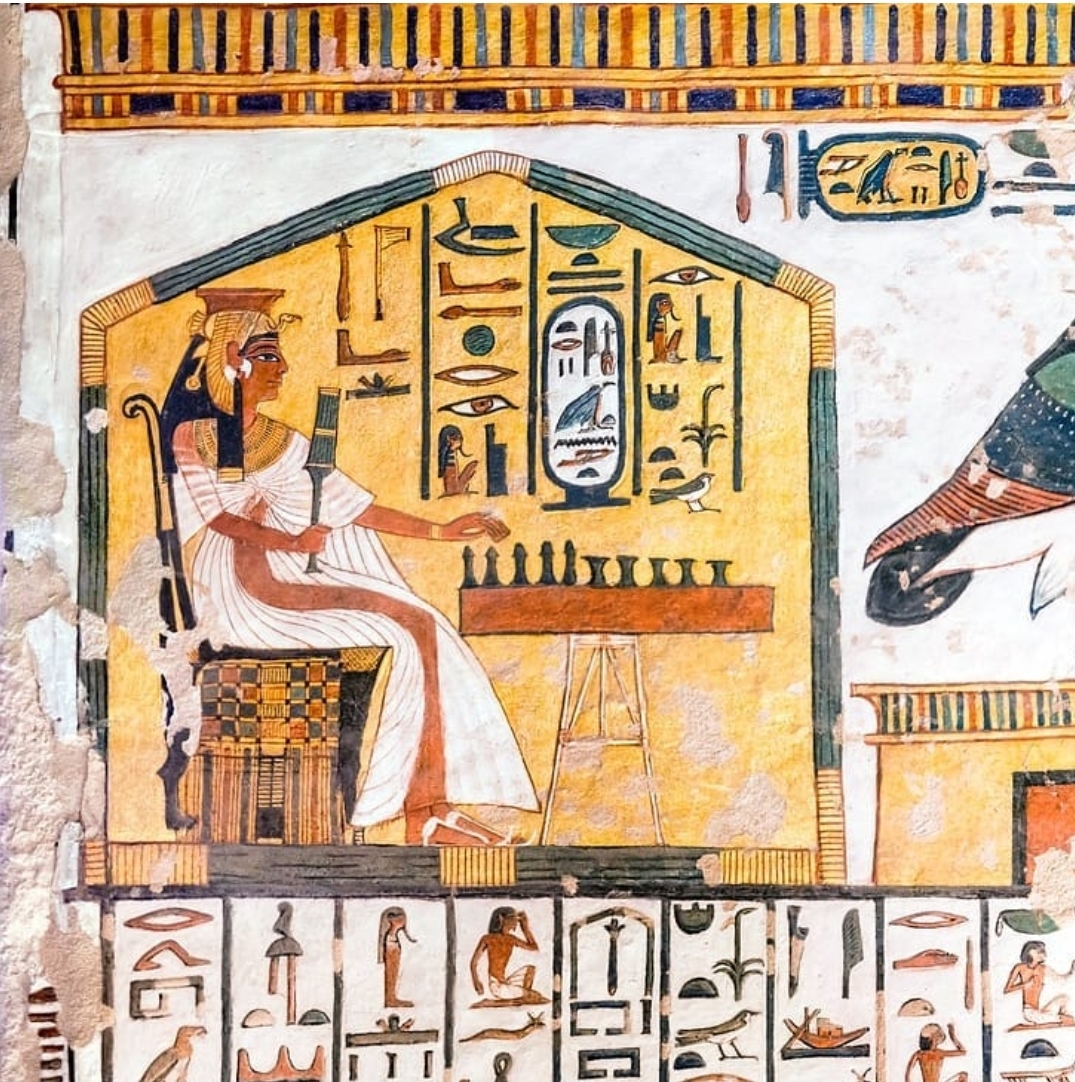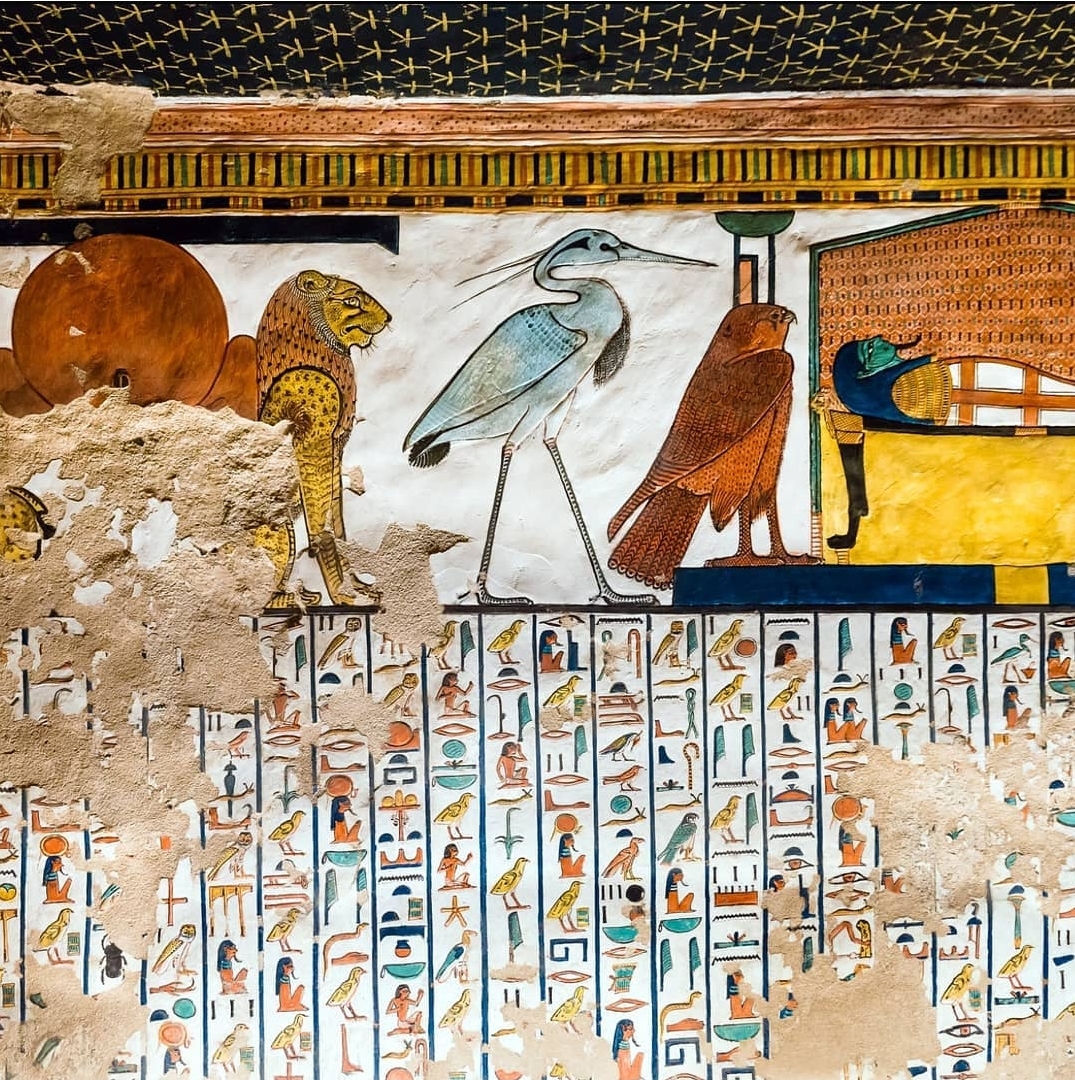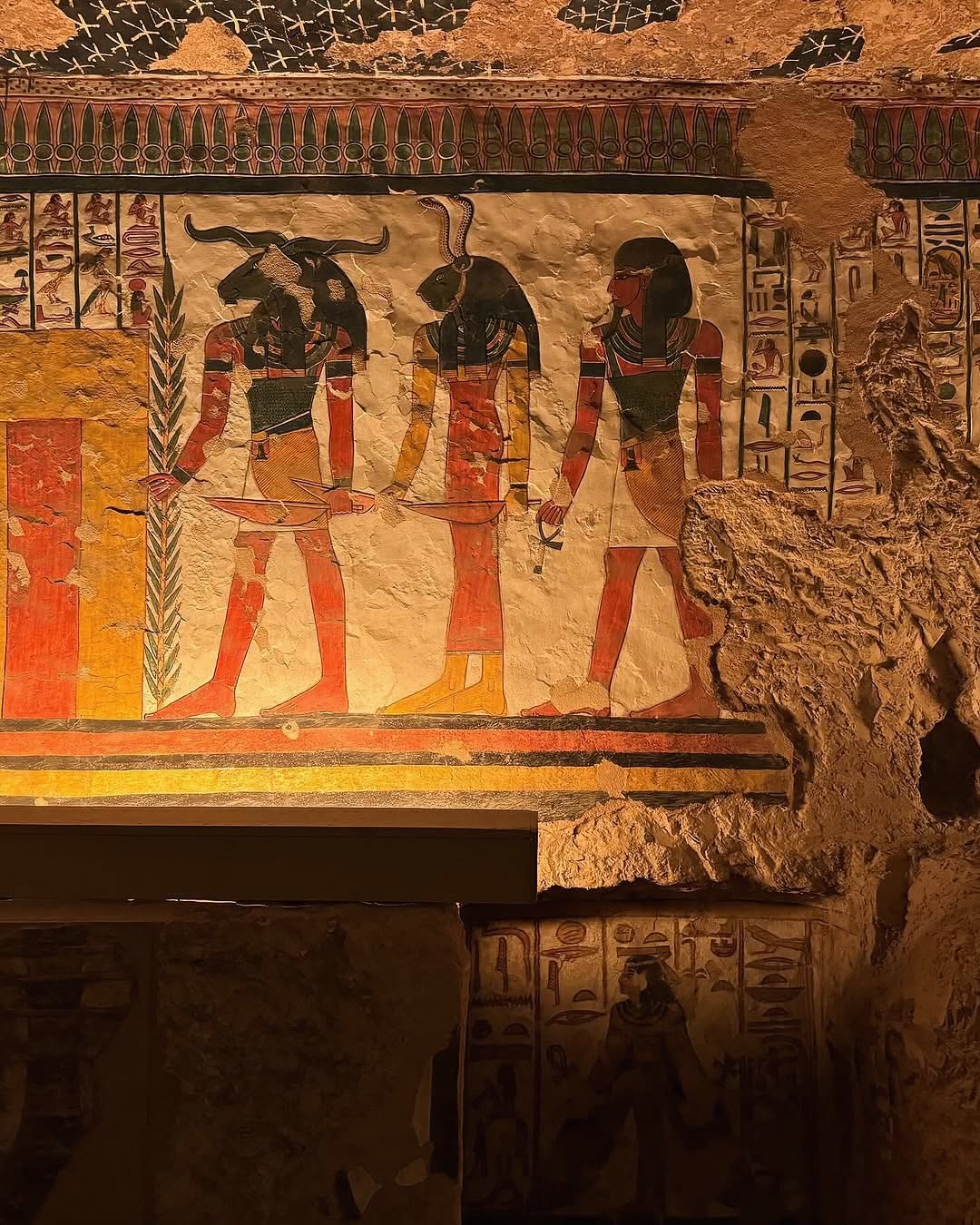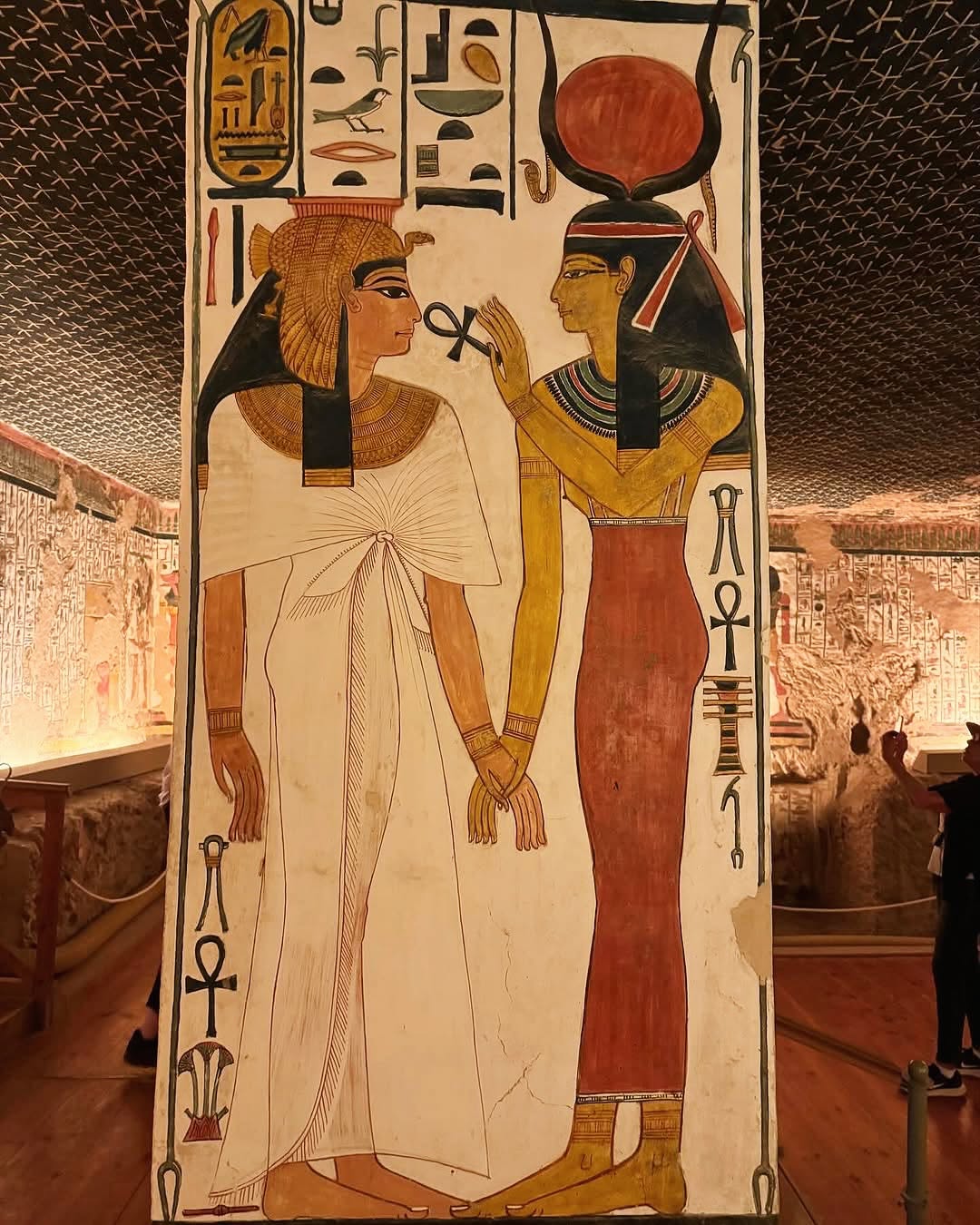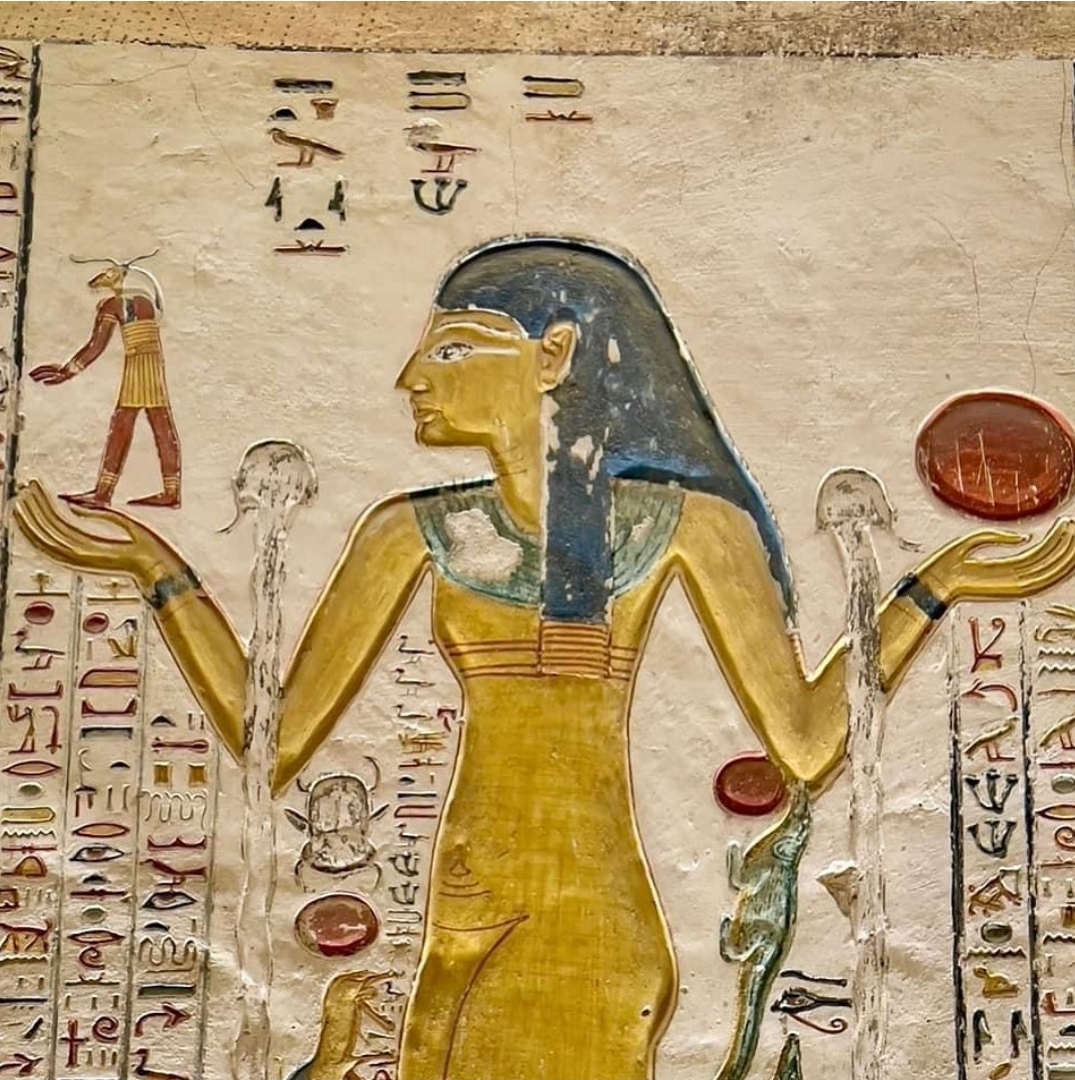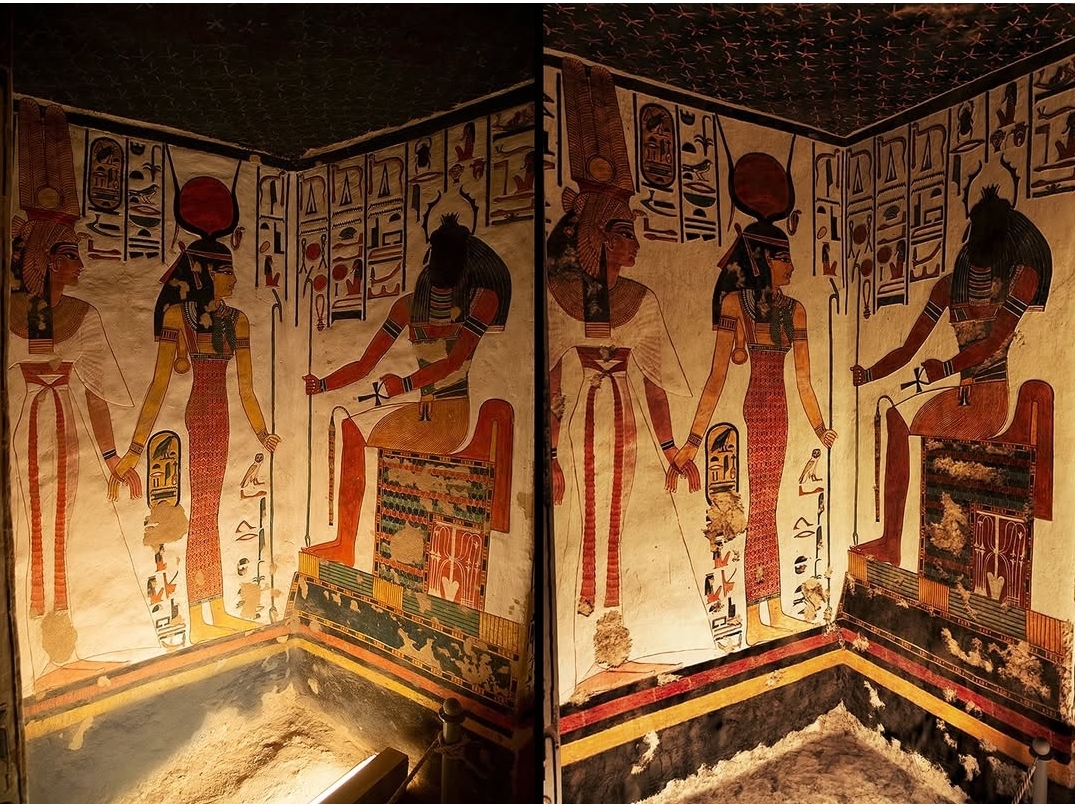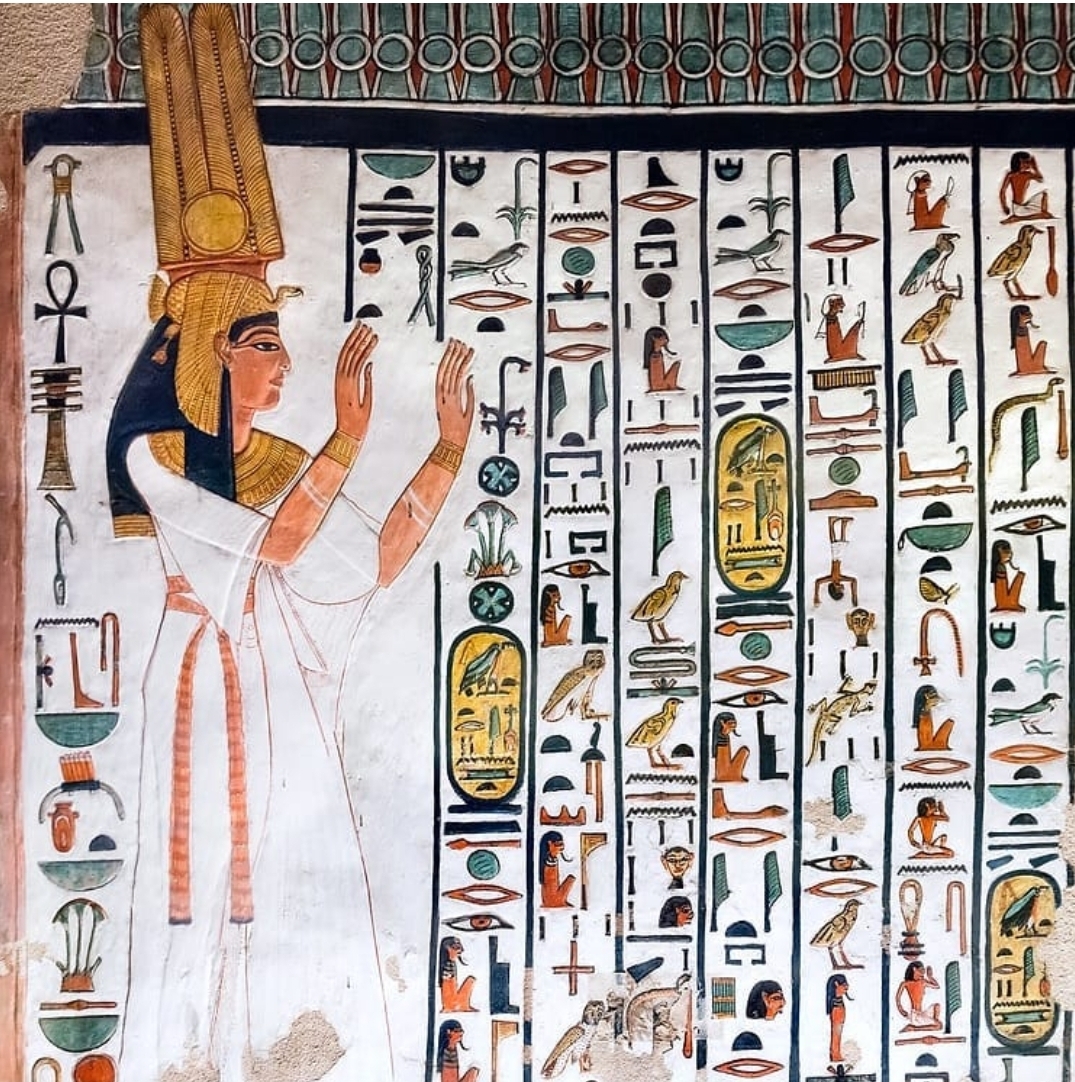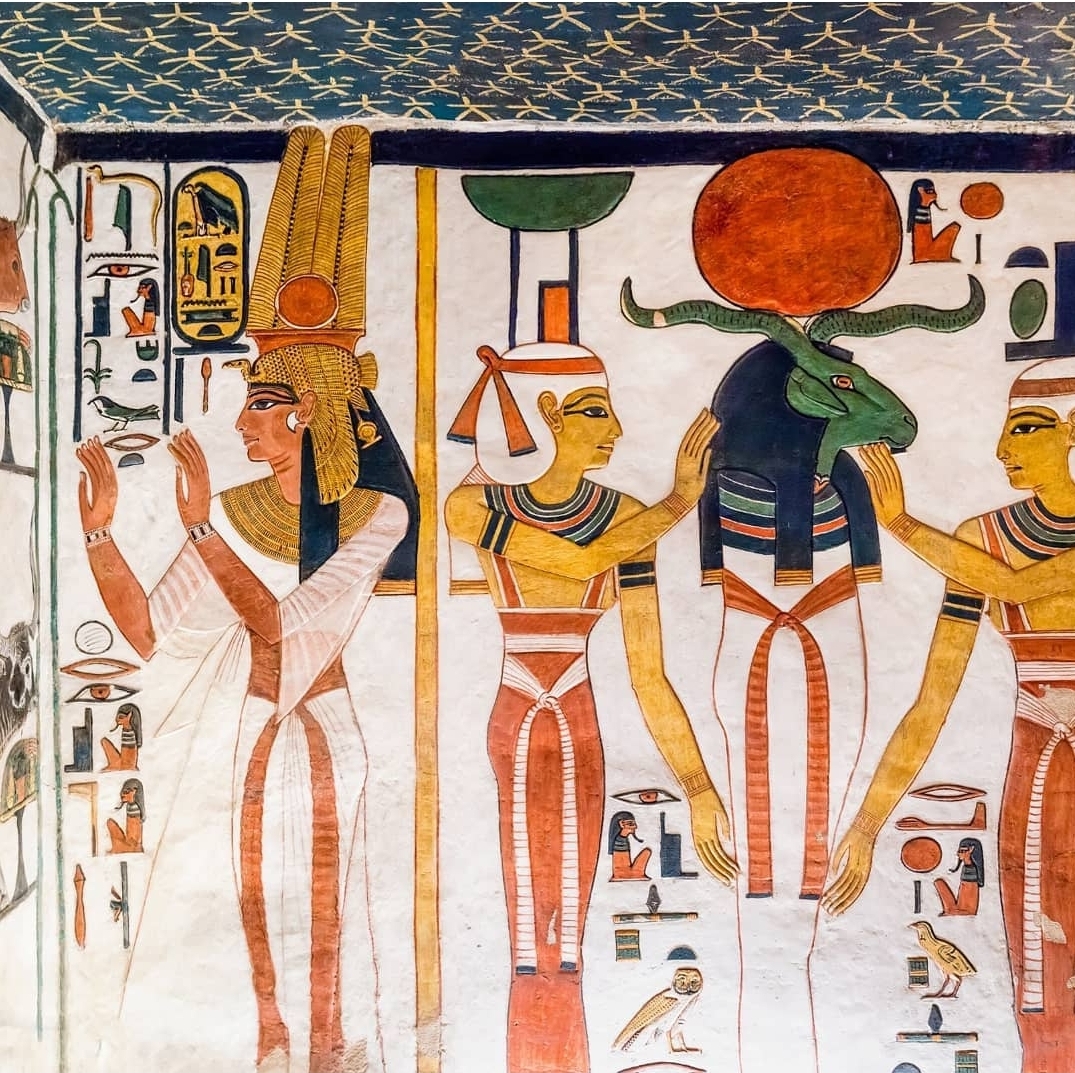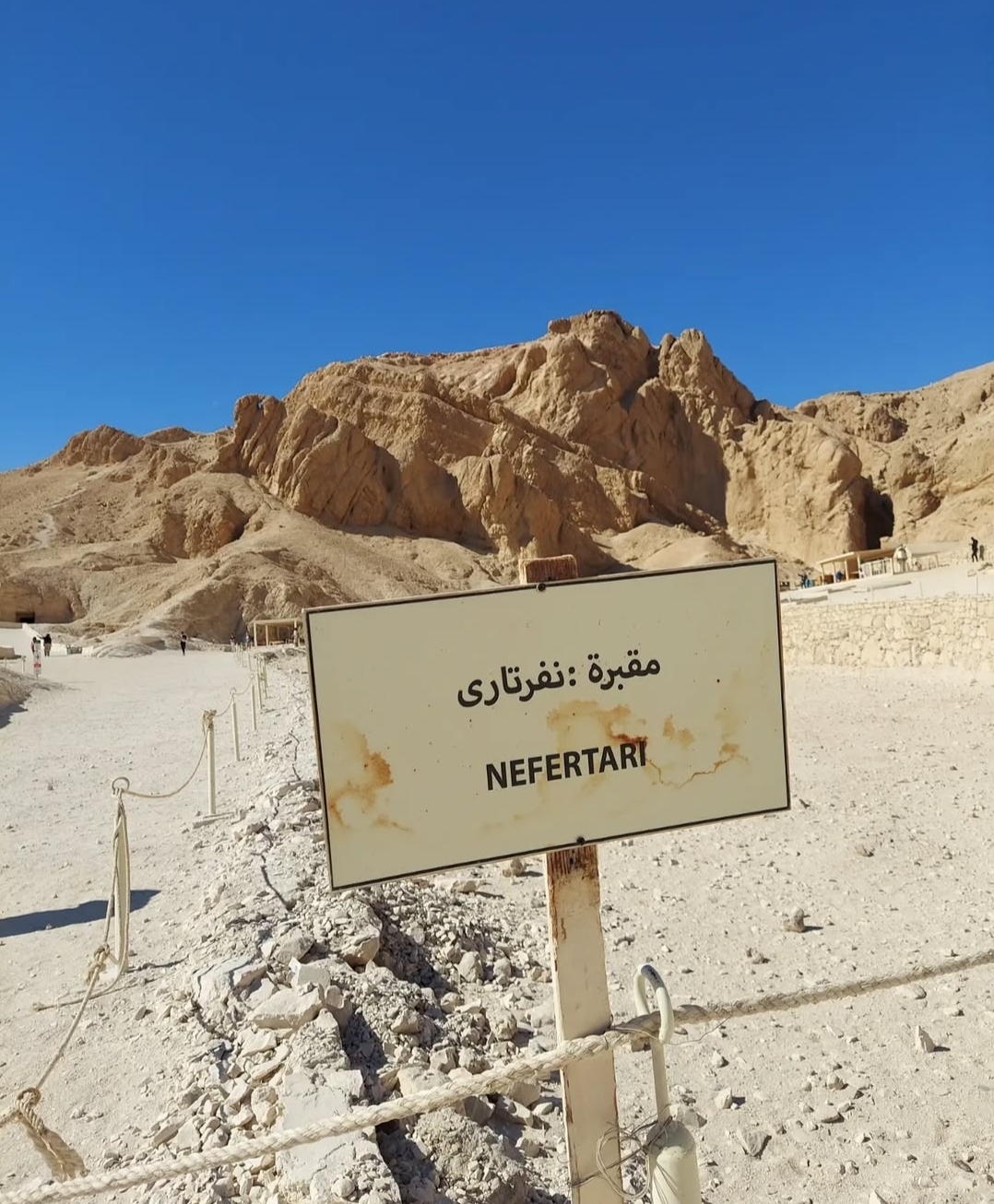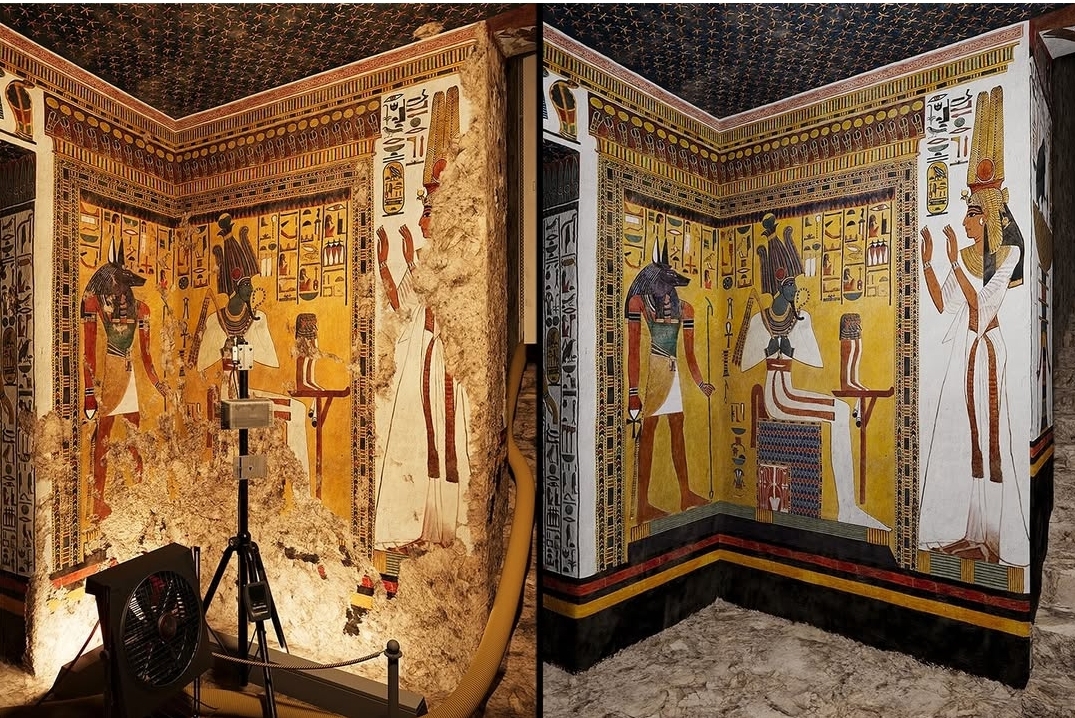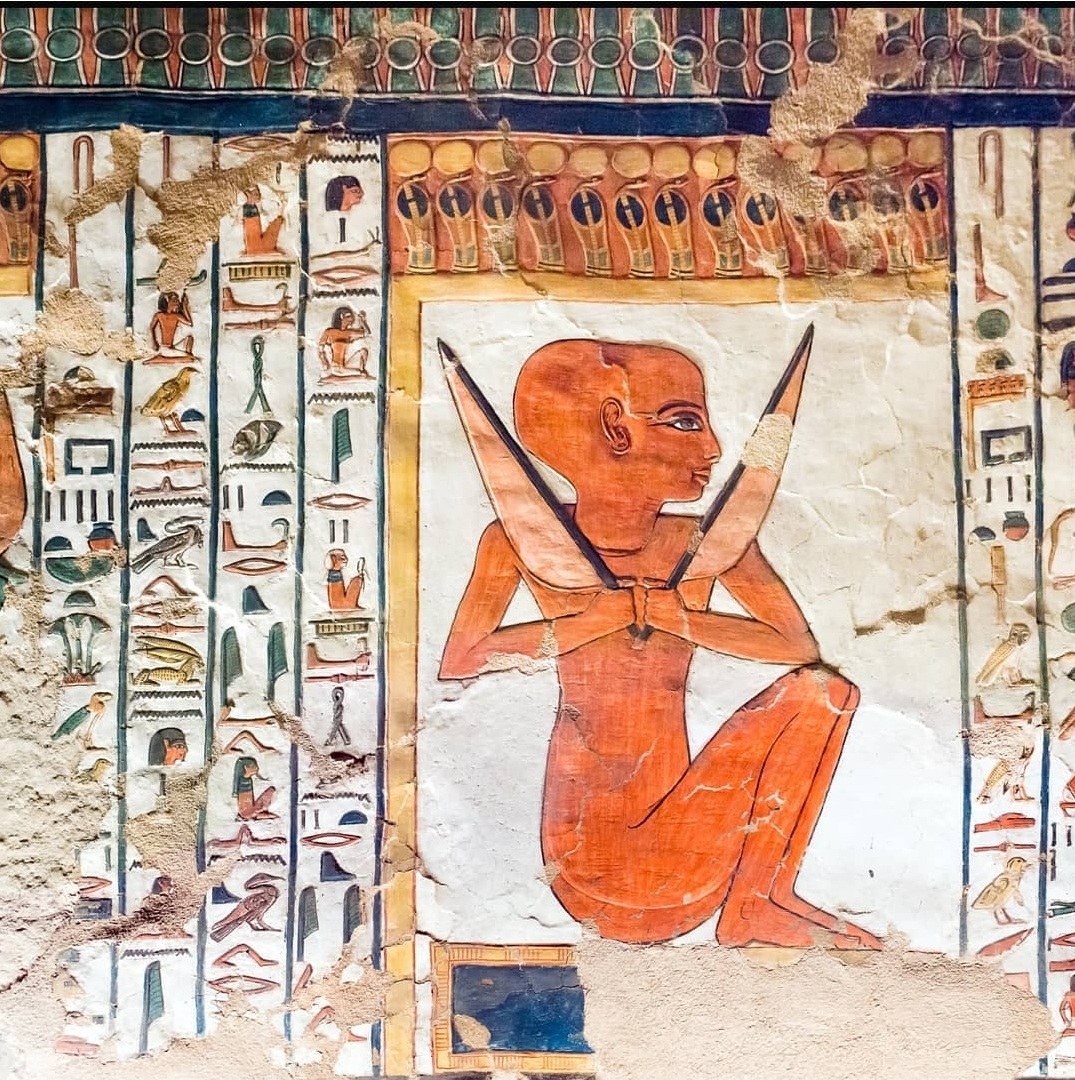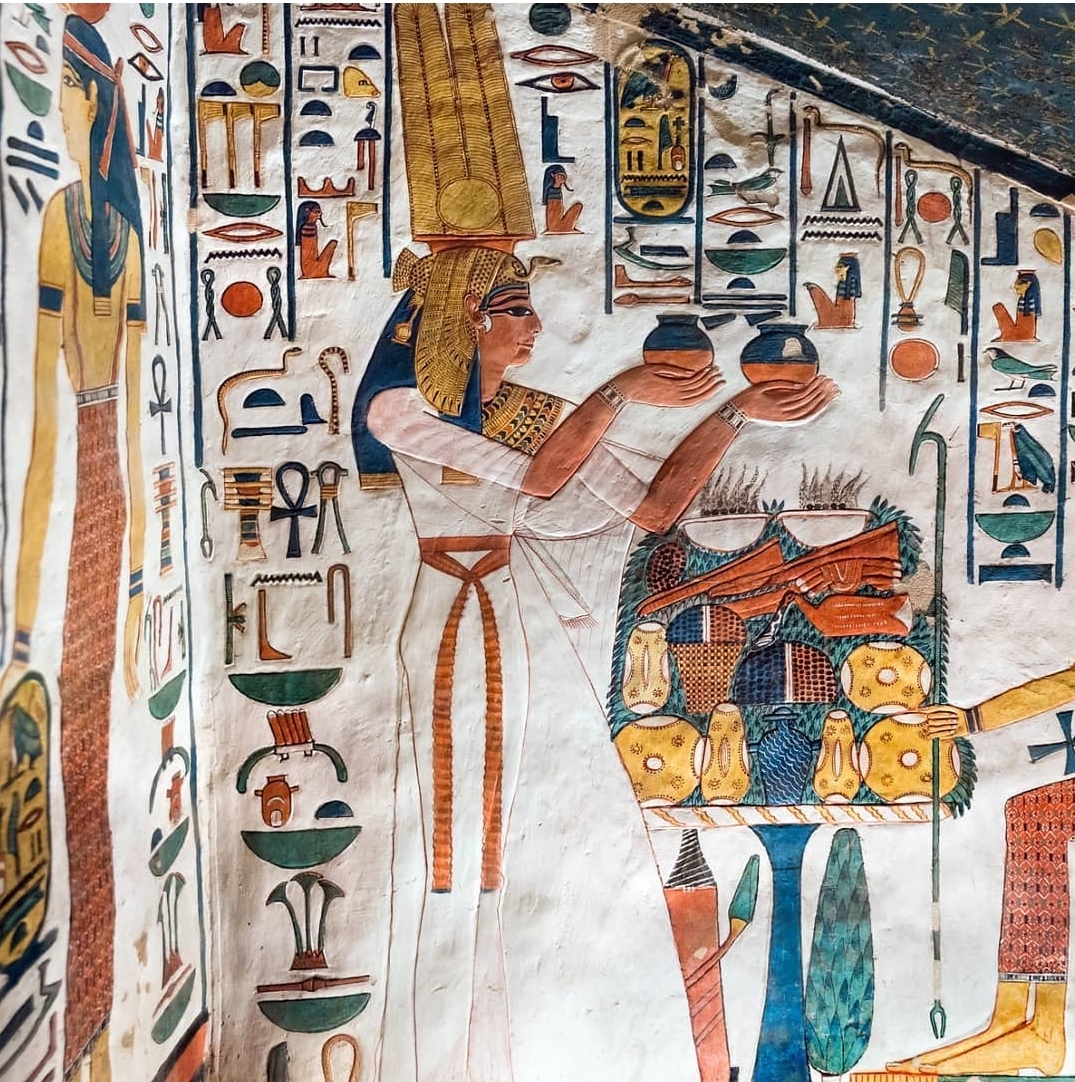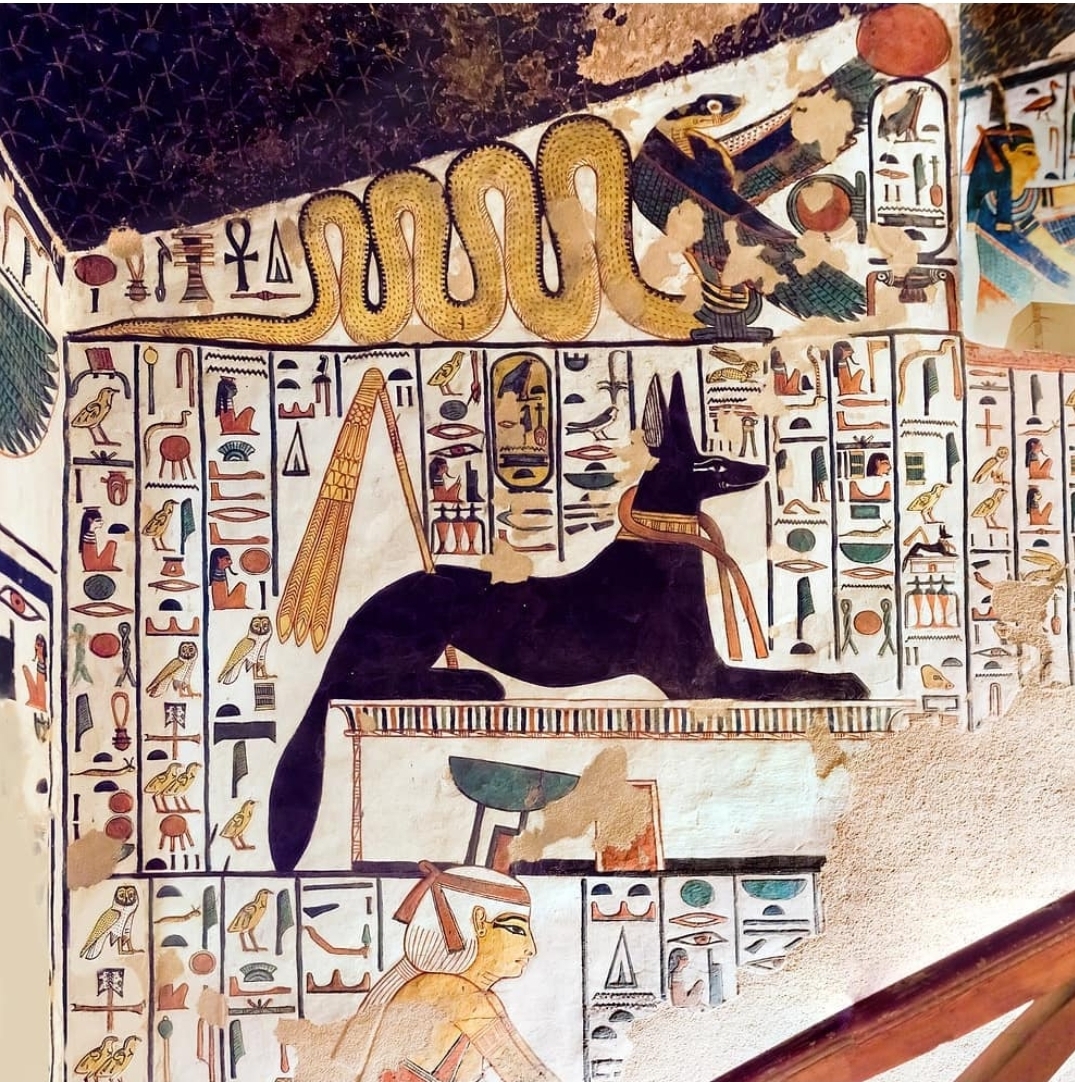Tomb Of Nefertari Luxor
Tomb Of Nefertari Luxor, Deep within the Valley of the Queens on Luxor’s West Bank lies what many Egyptologists consider the pinnacle of ancient Egyptian funerary art – the breathtaking Tomb of Nefertari. This magnificent burial chamber, designated QV66, was created for Nefertari Merytmut, the favorite wife of the great Pharaoh Ramses II (1279-1213 BCE). Often called the “Sistine Chapel of Ancient Egypt,” this tomb represents not just a burial place, but a profound declaration of royal love and devotion that has endured for over three millennia.
The Historical Significance of Nefertari
Nefertari wasn’t just any royal consort. Inscriptions reveal she held unprecedented status, often appearing alongside Ramses II in temple reliefs – a privilege rarely granted to queens. Her name translates to “Beautiful Companion,” while her additional title “Merytmut” means “Beloved of Mut.” Ramses II’s devotion is immortalized in the Abu Simbel temple, where he built a smaller but equally stunning temple adjacent to his own, dedicated to Nefertari and the goddess Hathor.
Architectural Marvel of the New Kingdom
The tomb’s layout follows classic 19th Dynasty royal burial design, but with refinements that set it apart:
-
Descending Staircase (7.5m): The entrance leads down through a steep corridor symbolizing the journey to the underworld
-
Antechamber (5.2 x 5.2m): Features four pillars and serves as the first ritual space
-
Side Chambers: Two small rooms possibly meant for burial goods
-
Burial Chamber (10.4 x 8.2m): The spectacular main hall with four square pillars
-
Total Depth: 27 meters below the valley floor
The Artistic Mastery Within
What makes Nefertari’s tomb truly exceptional is the quality and preservation of its wall paintings:
-
Color Palette: Artists used rare and expensive pigments:
-
Lapis lazuli for deep blues
-
Malachite for vibrant greens
-
Red ochre for skin tones
-
Gold leaf accents
-
-
Iconographic Program:
-
Ceiling: Night sky with golden stars on deep blue
-
Walls: Scenes from the Book of the Dead
-
Pillars: Djed pillars (stability) and floral motifs
-
-
Notable Scenes:
-
Nefertari playing senet (transition to afterlife)
-
The weighing of her heart against Ma’at’s feather
-
Her presentation to Osiris by Anubis
-
Protective deities like Isis and Nephthys
-
The 20th Century Restoration
When discovered in 1904 by Ernesto Schiaparelli, the tomb’s paintings were in critical condition due to:
-
Salt crystallization from rising damp
-
Previous botched conservation attempts
-
Fungal growth
The meticulous 1992-2003 restoration by the Getty Conservation Institute involved:
-
Stabilizing flaking paint with specialized adhesives
-
Removing non-original materials from earlier repairs
-
Installing climate control systems
-
Creating detailed condition maps
Visitor Experience Today
Access to QV66 is carefully controlled to preserve the fragile paintings:
-
Limited Entry: Only 150 visitors per day in small groups
-
Time Restrictions: Maximum 10 minutes inside
-
No Photography: Strictly enforced to prevent flash damage
-
Special Ticket: Requires separate purchase (currently 1,400 EGP)
How It Compares to Other Royal Tombs
While the Valley of the Kings contains more grandiose pharaonic tombs, Nefertari’s burial stands out for:
-
Artistic Quality: Finer brushwork than most royal tombs
-
Feminine Imagery: More goddess representations than pharaonic tombs
-
Intimate Scale: Designed for a queen rather than a king
-
Color Preservation: More vibrant than most contemporary tombs
Nearby Sites to Combine Your Visit
Enhance your understanding by visiting:
-
Valley of the Queens: Other royal women’s tombs
-
Deir el-Medina: Home of the tomb artisans
-
Medinet Habu: Ramses III’s mortuary temple
-
Ramesseum: Ramses II’s own memorial temple
Why This Tomb Matters Today
Nefertari’s burial provides unparalleled insights into:
-
New Kingdom funerary beliefs
-
Royal gender dynamics
-
Ancient painting techniques
-
Pigment trade networks
-
Climate change effects on preservation
Tips for Your Visit
-
Arrive at opening time (6am) for best chance of entry
-
Bring binoculars to examine details from the walkway
-
Visit the Egyptian Museum in Cairo first to see Nefertari artifacts
-
Combine with less-visited West Bank sites to avoid crowds
-
Consider hiring an Egyptologist guide for deeper interpretation
The Tomb of Nefertari remains not just an archaeological treasure, but a moving testament to love, art, and eternity that continues to awe visitors more than thirty centuries after its creation. Its careful preservation ensures future generations can still witness what is arguably ancient Egypt’s most beautiful artistic achievement.
